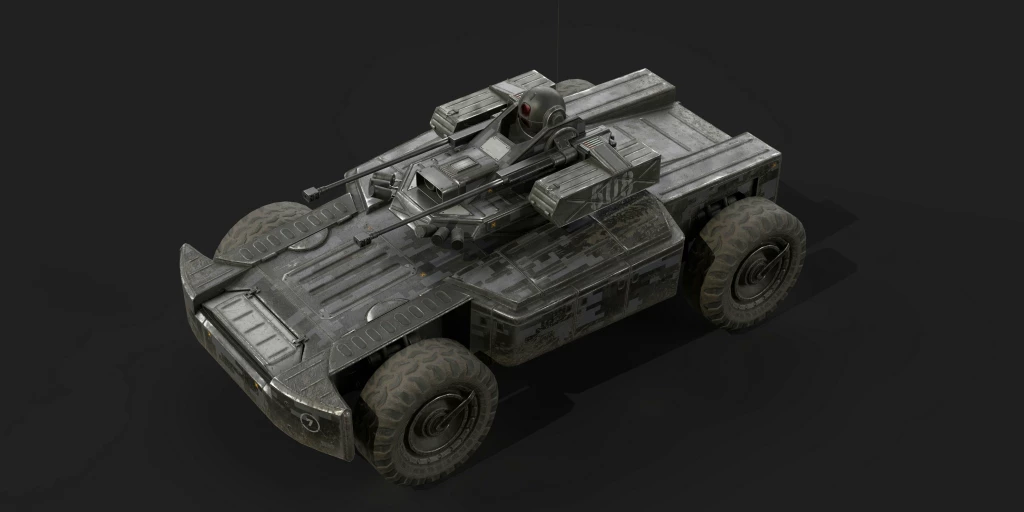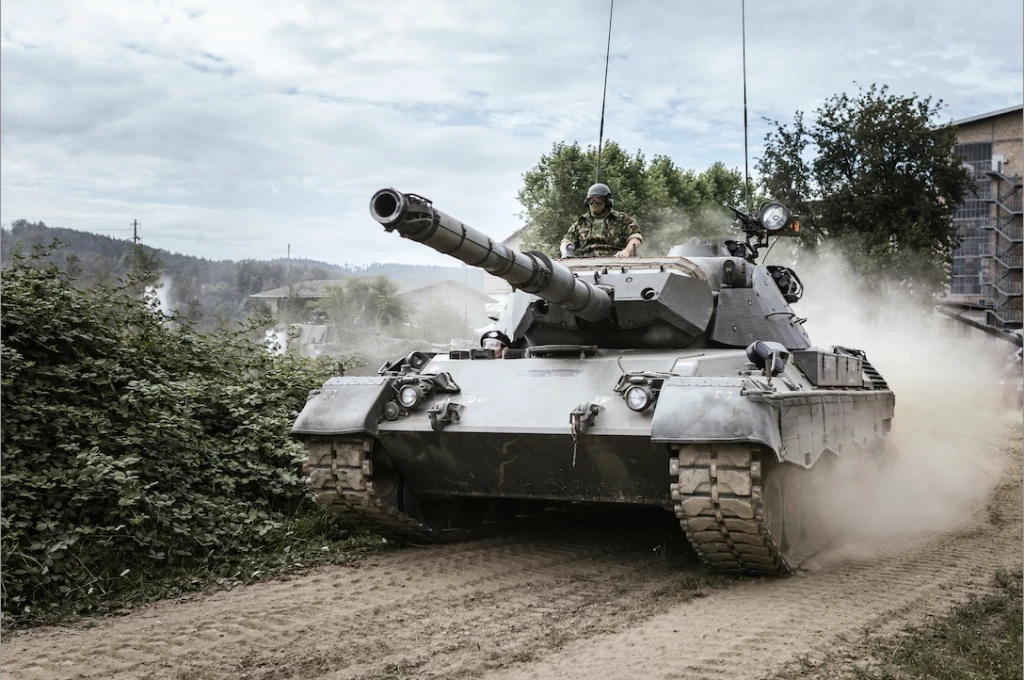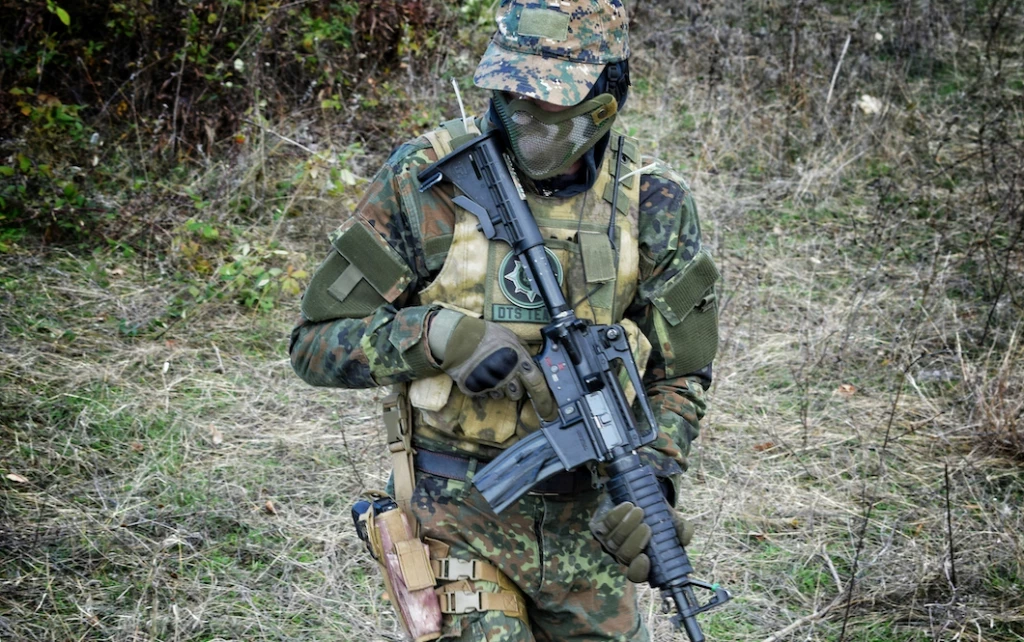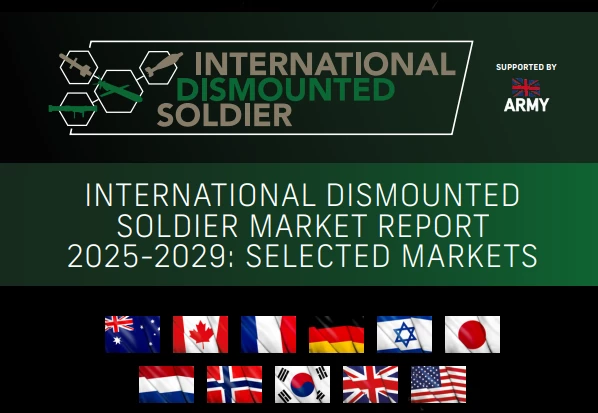The Evolution of the Royal Armoured Corps by David Willey
Add bookmarkAs curator of the world-renowned Bovington Tank Museum, David Willey is one of the foremost experts in the history of armoured warfare. In preparation for the International Armoured Conference in Farnborough 2025, we asked to delve into the history of the RAC.
How did the RAC come to be?
‘We used to love and ride away, but now we screw and bolt’
The cavalry had not had a good war on the western front in the First World War, but many senior officers at the War Office were from the cavalry and like most people who had worked with horses – deeply loved them. In the postwar period the prospect of giving up centuries of tradition and of course the horse itself created a period of passionate debate not just in the Army, but with the wider public at large.
In 1927, an Experimental Mechanized Force was created to test some of the ideas of how modern vehicles might be used in future battles, and JFC Fuller – doyen of the new school of mechanised thought - was offered the role of commander. He turned the post down (citing not enough support and too many other responsibilities), so its command was taken by an infantry Brigadier R J Collins. Large exercises on Salisbury Plain showed how the Experimental Mechanized Force could speedily outmanoeuvre traditional forces such as marching infantry, cavalry and horse-drawn artillery. Re-named the Armoured Force, new vehicles and structures were tried along with radio communication, and the experiments were widely reported and proved influential not just to the British Army but to other supporters of armoured vehicles in Europe.
Arguments continued over the next decade as to the best combination of tanks and infantry and the proportion in which they should create a balanced force along with supporting arms such as the artillery and engineers. The British High Command saw the Mechanization of the whole Army as a logical next step, despite arguments from some quarters who saw the loss of the horse as a step too far. The economic crash of 1930 meant there was not enough money to allow mechanisation at anything other than a slow pace over the decade, and there were few effective vehicles available to replace the horse in service.
Practical matters such as the change from horse-drawn transport to motorised transport on Britain’s roads and the increasing use of tractors in agriculture meant that the whole of society was changing. The cavalry found recruiting harder to achieve as mechanised units appeared to give a more valuable and relevant trade to recruits. Inevitably, there were jokes from both sides about the snobbery attached to the cavalry or the vulgarity of mechanics.
Giving the cavalry lighter vehicles for scouting and flank screening seemed appropriate to play on their traditions of élan and dash, and the lack of money meant the mechanization process was carried out unit by unit in the 1930s rather than in one potentially soul-destroying moment. There was also a powerful argument that in some parts of the Empire, the horse was still the best method of scouting or transport.
When was the RAC formed?
On April 4th, 1939, the Cavalry regiments and the Royal Tank Corps were combined into what was described as a loose association to form the Royal Armoured Corps. There was an intention to ultimately merge all the regiments under one cap-badge, but the war was only months away. The rapid expansion of the Corps as yeomanry and infantry units were converted to armour put off any further changes but the new Corps organized training, doctrine and influenced the equipment the Regiments would use.
‘The formation of the new corps will enable similarly equipped units to be similarly trained and administered, with increased military efficiency…The new corps is formed by association rather than amalgamation.’
Mr Hore-Belisha Secretary of State for War - April 4th 1939
The Government gave direction that the Army and the new Royal Armoured Corps should be used for Home and Imperial Defence only, but Lord Gort, head of the Army saw the likely need for a British Expeditionary Force to have to go to fight on the European mainland and there was a growing urgency for suitable equipment to meet these needs.
Tanks and armoured vehicles began the Second World War as only a small part of European military forces, but they soon gained huge publicity due to the successful use of German armour in Poland, Holland, Belgium and France and their contribution to the amazing speed of German victories.
As part of the ‘How did that happen’ analysis of the 1940 campaign Britain bought into much of Goebbel’s propaganda and there was a sense of the omni-presence and invincibility of the German Panzer formations when in fact early in the war the quality and numbers of vehicles on each side was actually very similar – it was how they were used and the speed of decision making that gave the Germans the advantage.
What were the initial challenges of the RAC?
The newly formed RAC had to look at what had happened and how could it effectively respond to the armour threat and create its own equipment and armoured formations. The armour story in the Second World War saw swift advances in firepower, gun accuracy and ammunition natures, which in turn led to increases in armour protection and a rapid leap in the size and weight of vehicles. Look at the German Panzer II, the most numerous German-built tank to take part in the 1940 campaign, armed with only a 20mm cannon, and compare that with the Tiger I of only two years later, armed with an 88mm gun.
A viewing of the minutes of the regular Royal Armoured Corps meetings shows the constant issues of the need to increase firepower and establish effective doctrine. Industry could simply not respond to the changing requirements of the Corps with its earlier emphasis on heavily armoured infantry support vehicles changing to a greater need for faster Cruiser tanks for use in North Africa. It did not help that strategic (and sensible ) priority from the 1930s remained in place – that was, factory space and resources were given to the RAF and the Navy, and tanks were placed in a lower category of importance till 1942. Churchill had also insisted on the continued building of 1940 model tanks as the idea of stopping factories to re-tool for a better model might bring too much risk with invasion a real threat.
For the RAC in terms of equipment, the American-supplied M3 Grant tank and M4 Sherman tank (that the British had helped design) came to fill the gap in British tank production. In fact, there was an offer from the Americans that Britain could give up all tank production to concentrate its industries in other areas, such as locomotive manufacture (locomotives were harder to ship across the Atlantic for the war effort than tanks), but the RAC thought this policy too risky and so the offer was declined.
The trend towards a ‘universal’ tank developed through the war: a tank that could have firepower and protection to challenge enemy tanks but also be able to support infantry, fire high explosives and have a reasonable turn of speed and range. Montgomery, leading British forces in the NW Europe campaign, argued for such a vehicle but had to make do with earlier, more targeted designs. He saw the American Sherman as the best to adapt to this role. The RAC had eventually commissioned a superb tank, designed as a ’heavy Cruiser’, that arrived just too late to meet this role but went on to have a successful and lengthy career with the RAC and the Armies of 12 other countries. This was the famous Centurion, which started with the 17-pounder (76.2mm) gun and later upgraded to the 20-pounder (84mm) and later still the 105mm L7 gun.
How did the RAC develop after WWII?
The post-Second World War period saw the rundown of RAC units to the pre-war peacetime allocation of 20 Cavalry and 8 Royal Tank Regiments, a size reached in 1947. Efforts were made to start ‘unification’ talks concerning the amalgamation of the Cavalry and RTR, but these were unsuccessful. As the historian of the Royal Armoured Corps, Kenneth Macksey, stated – ‘the members of the Regiments invariably putting the RAC last in their list of loyalties, seeing it only as an agency to carry out those complex functions which were beyond simple Regimental means.’ The battle between loyalty to a Regiment (the team) and loyalty to a Corps (the league) was to continue despite constant efforts to make the system more streamlined and effective. Montgomery argued that all RAC Regiments should be able and adaptable enough to face any role, and officers would be posted in the RAC ‘in accordance with the needs of the Army’, only allowing them to go to their own Regiment ‘whenever that can be done’. As Macksey again pointed out, ‘ The calls for unification and standardisation were loud, clear and rarely acted upon.’
Further doubts about the usefulness of the tank were raised in an age of cheap anti-tank weapons such as the Panzerfaust, the Bazooka and the Rocket Propelled Grenade, but the RAC continued a programme of tank development with the general understanding that a tank's primary role now was to defeat another tank. The consensus was that despite the development of a range of new anti-tank weapons, such as anti-tank guided missiles, the best defence against tanks was another tank. The Cold War saw the RAC constantly have to evaluate the Warsaw Pact tank threat and ensure its own fleet – vastly smaller in numbers – could potentially defeat or hold up invading forces should the Cold War become Hot. The British experience in the Second World War led to a desire for the Corps to have tanks with the greatest firepower and best protection, but mobility was considered less important. This led to the upgunning of the Centurion tank twice and the employment of the heavy Chieftain tank with its 120mm gun.
The RAC put considerable emphasis not just on the kit and the need to overmatch the enemy threat but also on the training of the crews to gain the most from the kit. This led to well-tried and tested systems taught by the Gunnery, Driving and Maintenance and Signal Schools at Bovington and Lulworth in Dorset. The training of Centurion crews to get 13 accurately aimed rounds onto targets in 1 minute led to other countries sending their crews to Lulworth. This procession of the world's (friendly) Armies spending time to see how the RAC trains – or to train with the RAC continues and has the obvious benefits of mutual understanding of how your Allies fight.
The end of the Cold War saw the size of the RAC alongside most NATO tank forces diminish as Governments wished to see the ‘Peace Dividend’. But as with so many optimistic Defence Reviews or re-alignment of forces – no sooner is the ink dry on plans than history interrupts the process. The RAC would have to send armour to the First and Second Gulf Wars and to peacekeeping, then peace enforcement in Bosnia. The need to equip an armoured Brigade to travel to Iraq revealed the paucity of spares and a painful recognition that what was on the books was a poor reflection of what equipment, manpower and capacity was available.
The changing nature of the threat with counter-insurgency operations in Afghanistan and Iraq led to the Corps having to adapt its training to ensure crews could be provided for a plethora of new types of vehicles – many bought under Urgent Operational Requirements (UORs) whilst the emphasis on heavy armour for this period decreased. The role and influence of the RAC inevitably diminished, and whilst brave faces have been put on cuts and reduced resources, along with failed or delayed procurement programs, the Corps, as with much of the Army and NATO as a whole – has been left in a position where the public perception of the size and capability of the force are at odds with reality.
What about the Royal Armoured Corps today?
The Royal Armoured Corps currently consists of 10 Regular and 4 Reserve Regiments. It has three Regiments of Challenger 2 tanks with the Challenger 3 tank in the pipeline – but again at smaller numbers. The Ajax programme is at last delivering vehicles but the project is still far from completion.
As one of the two Combat Arms, along with the Infantry, the RAC is primarily focused on close combat through “closing with and destroying the enemy”. Europe is at war again – a war where dramatic changes can be seen developing in front of us, yet many issues remain wedded to what might be thought a previous era in warfare. We see a ground war at scale, with equipment from a past era fighting alongside new technologies on the same battlefield on the same day. The Royal Armoured Corps will again need suitable armoured vehicles and adaptable crews to engage a sophisticated enemy, and as before in its history, the urgency grows….

























